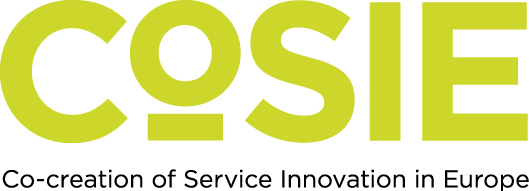Appropriate engagement with young people is vital in customer service work

Engagement trainer Vanessa Peitilä has been involved in designing and implementing training for frontline staff aimed at those working in customer services at the City of Turku and TE Services. The trainings were supposed to be organized this spring, but due to the coronavirus pandemic, the aim is to carry them out in autumn 2020.
Peitilä says that in the training, the employee fills in a self-evaluation questionnaire to evaluate their own engagement skills according to indicators defined by young people. In addition, the training participants are divided into groups, conducted by young people themselves, to discuss different themes.
Peitilä says that these young people have experienced varying levels of encounters in different customer service situations. The purpose of the training is to introduce ideas for new ways of engagement, and to support customer service work and its quality.
“For many younger generations, the meeting might be the only contact with another human being that day. If the encounter has been good, the youth finds it much easier to continue running their errands e.g. in follow-up meetings or to encounter other people. If the encounter has been bad, it may feed depression and increase withdrawal”, says Peitilä.
Investing in employees pays off
Career Planner at the Employment Services in Turku, Minja Vaherkylä, is planning to participate in the upcoming engagement training. She is really looking forward to them.
“I am looking forward to discussions and hearing the thoughts of young people the most. I would also like to learn how to recognize possible pitfalls in my own customer service situations”, Vaherkylä contemplates.
Vaherkylä believes that the training will provide her with food for thought on how to conduct herself in the customer service situations as well as possible.
Both Peitilä and Vaherkylä have noticed that, in order to maintain high-quality customer service and results, service bodies need to invest in providing employees with ways to cope with frontline interaction. In addition, if the encounters are successful, the service path would most likely become shorter.
“Employee training should enable creating a safe atmosphere at the meeting”, says Peitilä.
According to Vaherkylä, the employee should have the opportunity to set a pace for the work and take enough breaks to have enough time to familiarize themselves with the next customer.
A sound basis for good encounters
According to engagement trainer Vanessa Peitilä, in terms of negative issues in encounters, youths have listed e.g. the employee looking at their watch, a disdainful attitude, poor listening and making assumptions.
“For example, it could be assumed that a young person who wears make-up and looks well on the outside is mentally in good shape, even if they weren’t”, Peitilä specifies.
In a positive encounter, the employee can read the situation. The meeting should also be peaceful.
“It is important to be able to provide concrete help for the customer, such as to show where something is located on a map, and not just to tell them to look it up online”, says Peitilä.
According to the experiences of Career Planner Minja Vaherkylä, customer service entails exploring which style suits each customer best.
“Some people want to share everything about themselves and others nothing. The customer should be allowed to talk about the issues of their choosing.”
The employee also notices if the encounter has been good.
“If the customer seems relieved when they’re leaving and answers the phone when you call them, you can see that the encounter was successful”, says Vaherkylä.
A change in the culture as the reason?
Career planner Minja Vaherkylä has noticed that youths are more susceptible to sense what the employee thinks of them than others. Adult customers are not usually that sensitive.
“It may be caused by a certain change in the culture of running errands. With young people, you discuss things at a more personal level than with adults.”
According to the experiences of Vaherkylä, younger generations need more discussion and contemplation together, not direct advice on what they should do or whom they should contact.
Engaging with young people with special needs is a form of art
From an employee perspective, engaging young people with special needs involves even more challenges than with others. For example, all customers do not process questions as quickly as people on average.
“The employee should not be afraid of long pauses in the discussion. Some customers may require a longer time for the discussion, and you can’t bombard them with new questions straight away. Otherwise the issues may become mixed in the youth’s mind.”
Vaherkylä says that we should not consider youths with special needs faulty in any way, but the employee should be able to take responsibility for reserving enough time for the meeting for the customer to manage the situation.
What is engagement training?
A panel comprised of youths has been actively involved in developing services in Turku. The youth panel with eight members, which was assembled by Turun kaupunkilähetys ry’s Tukenasi.fi, was held in spring 2019 invited at the workshops of the CoSie project piloted by the City of Turku, Turku UAS and the Association of Finnish Municipalities. The workshops sought new ideas for public sector development work and designed customer-oriented services. In the workshops, service providers’ good engagement skills were highlighted as an important development target and the idea of engagement training aimed at employees was created.
The engagement training is a part of the work done in the Smart and Wise Turku project, which aims at preventing the social exclusion of young people. For more information on the training, please contact Project Manager Mari Kontio.
Text: Maria Vakkamaa, City of Turku
The article was originally published in Finnish on the web site of the City of Turku.
